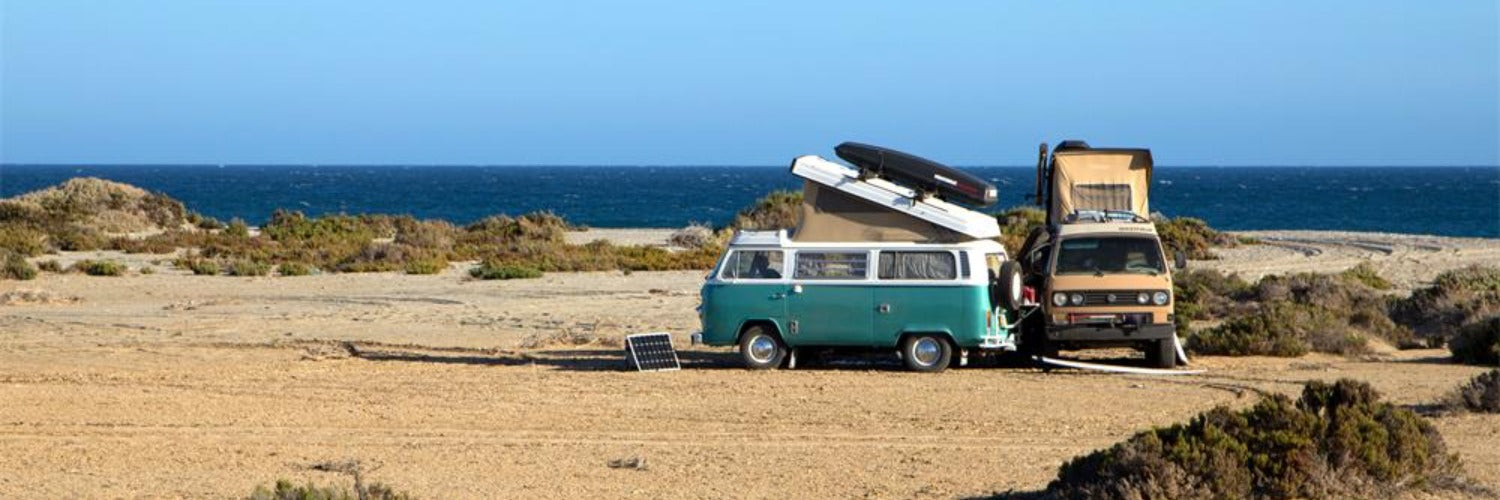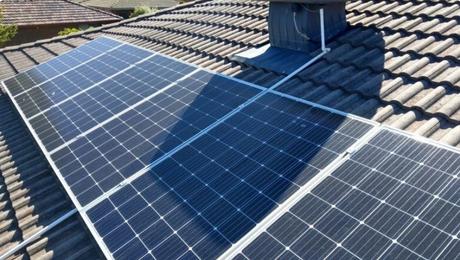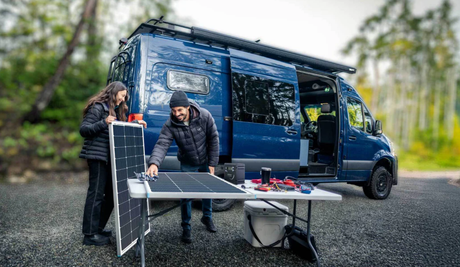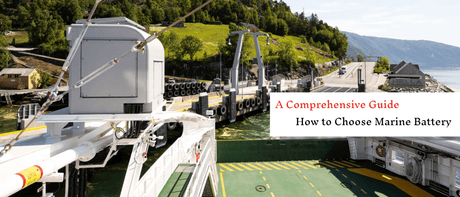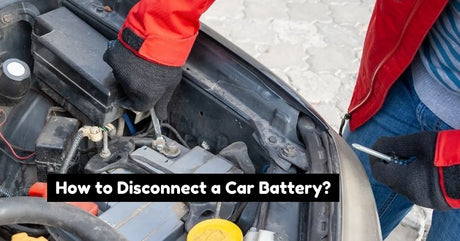What is the Best Solar Battery for Solar Storage in Canada?
Though they once felt like something out of a science-fiction movie, Solar panels are quickly becoming a go-to method for renewable energy in Canadian homes. Not only can they harness the power of the sun, but they can also allow you to store energy for later use when they are connected to a battery bank.
When it comes to solar batteries, Canada provides multiple options to choose from. But before you go diving into the world of solar batteries, it’s best to understand what they are, how they work, and what your options are.
What is a Solar Battery and How Does It Work?
Any electronic device must have an energy source to operate. Whether that means plugging your television into a power outlet connected to the local electricity grid or putting batteries into the back of your TV remote, energy is the lifeblood of electronics.
The invention of the first battery over 200 years ago revolutionized the way that people viewed energy storage and how it could impact their day-to-day lives. Without having to be constantly connected to a wired energy source, batteries allow people to work on laptops in the middle of High Park in Toronto, fly drones over the St. Lawrence River, or set up RVs in Banff National Park.
But it doesn’t stop at small electronics anymore. Now, there are have solar batteries that act as the energy storage units for solar panel kits. Your solar panels can absorb energy from the sun during peak sun hours, which naturally occur during the middle of the day. The problem with this is that most Canadian homes require a lot of their energy during the early morning and late evening when everyone is home.
So while your solar panels are great for collecting energy during the day, if you’re not home to use the energy right then, you’ll lose it. That’s where solar batteries come into play. Just like other battery types, solar batteries can be charged by the energy that your solar panels collect, and then the batteries can store that energy -- in some cases, for up to a year!
The energy from your solar panels can’t just go directly into your solar batteries, though. Your solar panel system will also need an inverter. This device takes the direct current (DC) energy from your solar panels and transforms it into alternating current (AC).
From there, your inverter can either send the energy directly into your home for immediate use or store it in your solar batteries. Canada is known for many amazing things -- skiing, poutine, and friendliness -- but hours of sun, not so much. There are some really long days in the summertime, but those cold winter nights are when your solar batteries can be lifesavers (sometimes, literally).
Because solar batteries can store energy, they are a great backup power option if there are power outages. Having a battery backup system in place for your home energy needs can give you peace of mind and keep the lights and heat running when you need them most.

Types of Solar Batteries
At this point, it’s pretty clear why having solar batteries in Canada as part of your solar energy system makes sense. You’ll be able to get the most out of your system, and you won’t have to worry about running out of energy anytime soon.
Now comes the challenging part -- deciding which type of solar batteries are best for your needs. One major factor to consider is whether your solar energy system is grid-tied or will remain off-grid at all times. For example, a solar panel kit being utilized for an RV or tiny home will likely remain off-grid, while a house in the city will be tied to the local electric grid.
The main reason that being on-grid or off-grid matters is because you’ll need to consider the amount of energy you’ll require and your desired storage capacity. Some solar batteries are designed to store large amounts of energy over prolonged periods of time, while others are designed to be compact and lightweight, which means that they won’t hold as much.
Let’s go through the details of the main solar batteries available on the market to get a sense of which ones may fit your needs. Keep in mind that the Renogy solar panel calculator can help you to determine not only how many solar panels you should use, but also how to adjust your assessment depending on whether you plan to be on-grid or off-grid.
Lead-Acid Solar Batteries
When you see a lead-acid solar battery, it might remind you of a car battery. Appearance is where the similarities stop, though, as lead-acid solar batteries are designed to store energy over long periods of time, while car batteries are designed to give quick bursts of power for a car to start.
The most significant appeal to lead-acid solar batteries is their price. They are almost always the cheapest option, coming in around 120CAD in most cases. Unfortunately, by saving some money, you might end up losing some time. Lead-acid batteries can be high maintenance, especially if they are flooded lead-acid batteries.
Flooded lead-acid batteries require you to use a hydrometer to check water levels regularly and add water as needed. Any type of lead-acid battery will also need to be stored in a well-ventilated area, as they release gases that could be toxic if left to accumulate.
Sealed Lead-Acid Solar Batteries
Another type of lead-acid solar battery is known as a sealed lead-acid battery or SLA battery. There are two types of these solar batteries: Absorbent glass matt (AGM) batteries and gel batteries.
Both types are low-maintenance, making them more appealing than standard lead-acid solar batteries. They also have a longer lifespan than standard lead-acid batteries, which is ultimately reflected in their price, which ranges from 300-550CAD.
AGM batteries tend to be on the cheaper end of the above range and have a better temperature span than their gel cell counterpart. However, their expected lifespan is not as long as gel batteries, making the return on investment lower.
Gel batteries use silica to harden the battery’s electrolyte solution, causing them to take longer to recharge than AGM batteries. Their output and charge rates are usually lower, but they have a longer lifespan, along with a slightly steeper cost than AGM batteries.
Lithium-Ion Solar Batteries
Lithium-ion batteries, also referred to as lithium iron phosphate solar batteries or LiFEPO4, are the latest technology in the world of solar batteries. They come with a wide range of benefits and a price tag to match. They can cost you anywhere from 600-1850CAD.
What makes this option so appealing, though, is that they have high discharge and recharge rates, exceptional lifespans, and require almost zero maintenance. To top things off, they are lightweight and compact, which makes them ideal for setups that don’t have too much space, such as RVs, tiny homes, and boats.
So while this battery type may seem like a hefty investment upfront, it will be well worth it in the long run, especially if you’re looking for a “set it and forget it” situation for your solar energy storage needs.
What to Look for When Choosing a Solar Battery
After considering the three main types of solar batteries and how they function, you’ll also want to look at each battery’s capacity, power, voltage, depth of discharge, and cost. Let’s see how each of these factors stacks up when you’re making your decision.
Battery Capacity
Different batteries come with varying capacities of storage, something that is crucial to consider when you’re making your purchase. Not only does a battery’s capacity determine how much energy you can store, but it will also determine how many batteries you should purchase. Sometimes, having only one or two large-capacity batteries will do the job, while other times, it’s better to have multiple smaller capacity solar batteries.
Think about whether you plan to use the solar batteries as your main energy source or if they will act as backup power. If they are your main energy source for an RV or tiny home that will use the energy daily, multiple small batteries may be better.
If your home is connected to the grid and the solar batteries will be primarily used when there are a number of cloudy days in a row or power outages, fewer batteries with higher storage capacity may be better. A battery with four to eight kWh of storage capacity will be sufficient for a four-person home in most cases.
Another factor to consider if you’re on-grid is whether you plan to seek any tax rebates or credits from the government. In some cases, you can take your additional stored energy and sell it back to the grid as a way to cut down on your electric bills. Participating in these incentives may cause you to want additional storage capacity, which would mean investing in more than one battery.
Power/Voltage
The power produced by solar energy systems is measured in kilowatt-hours (kWh). This measurement is also what you will see on your monthly electricity bill, even though individual appliances are measured by how many watts (W) they use. It’s important to consider this when using the solar panel calculator to determine your overall system’s size, and therefore, your solar battery choices.
Voltage is also an essential part of choosing solar batteries. The voltage needs to be compatible with your solar panels and the other components of your system. Most solar panels are either 12V or 24V.
Depth of Discharge (DoD)
A solar battery’s depth of discharge refers to the percentage of the battery’s charge you can use before affecting its performance. For example, if you discharge or use 4 kWh from an 8 kWh solar battery, your DoD would be 50%.
In other words, your solar batteries can’t just run until they hit 0%, or at least if they do, it will likely shorten their lifespan over time. Instead, it’s best to give them a chance to recharge before dipping too low on energy.
An easy way to approach the depth of discharge is to realize that the higher the depth of discharge is on a solar battery, the longer you’ll be able to use it before it needs to recharge.
Cost
Naturally, different types of solar batteries are going to come with different price tags. As mentioned previously, lead-acid solar batteries are generally the cheapest option, coming in around 120CAD. They use the oldest technology and require the most maintenance.
SLA batteries are a reliable mid-price range option at 300-550CAD and are more convenient and longer-lasting than lead-acid options.
Lithium-ion batteries can go as high as 1850CAD each, but they are the most reliable and offer advantages that the other options can’t provide. Being the latest in solar battery technology allows them to last significantly longer than other battery types, and they are very user-friendly.
As is true of most things in life, you get what you pay for when it comes to solar batteries. It’s important to not only consider the upfront cost of each battery type, but also account for their lifespans and usability before deciding which option will be ideal for your setup.
The Overview
Setting up a solar energy system in your on-grid home or an off-grid RV or tiny home is a great way to utilize renewable energy and make sure that you’re never left in the dark. Including solar batteries in your energy system is a reliable way to ensure that you’ll always have the power you need, regardless of the weather or your location.
But not all solar batteries are created equally, and the technology continues to advance at a rapid pace. When you’re deciding which solar batteries to purchase for your system, keep in mind factors such as capacity, voltage, and cost. Also, consider how much maintenance you’re willing to put up with and how frequently you plan to use the batteries as your main energy source.
Even though some solar panel systems can function smoothly without any solar batteries, having them integrated into your system is a simple way to ensure that you get the most out of the glorious renewable energy source we like to call the sun.
The Overview
In other words, your solar batteries can’t just run until they hit 0%, or at least if they do, it will likely shorten their lifespan over time. Instead, it’s best to give them a chance to recharge before dipping too low on energy.
An easy way to approach the depth of discharge is to realize that the higher the depth of discharge is on a solar battery, the longer you’ll be able to use it before it needs to recharge.
Depth of Discharge (DoD)
In other words, your solar batteries can’t just run until they hit 0%, or at least if they do, it will likely shorten their lifespan over time. Instead, it’s best to give them a chance to recharge before dipping too low on energy.
An easy way to approach the depth of discharge is to realize that the higher the depth of discharge is on a solar battery, the longer you’ll be able to use it before it needs to recharge.

